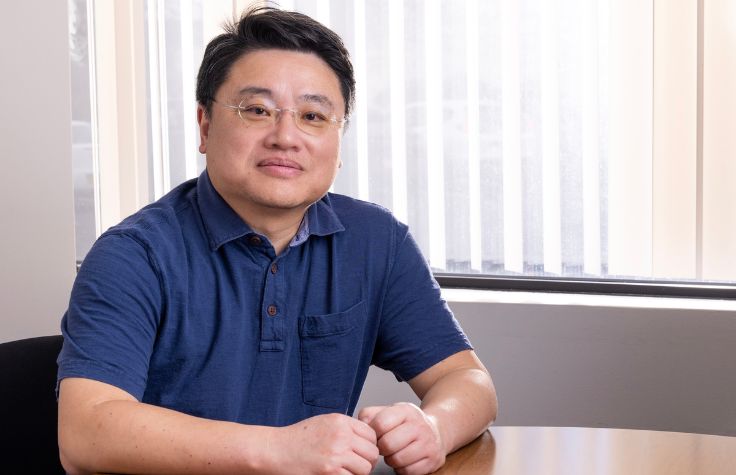
November 7, 2018
No matter how we look at it, cancer is chaos. Microscopic views show disrupted cellular architecture. Genomic sequencing reveals shattered chromosomes and major mutational loads. These physiological anomalies bubble through to patient’s lives, generating social, spiritual and economic dislocation. For me, as an oncologist, the ultimate goal is finding ways to restore order and improve the health and lives of cancer patients. Now, Chief Medical Officer of VR���˲�Ʊ, I am focused on ensuring genomic knowledge continues to transform the diagnosis and personalized treatments with the goal of markedly improved outcomes. As the Society for Immunotherapy of Cancer kicks off their annual meeting in Washington, D.C. today, I am excited to see so much progress toward improving patient outcomes by advancing the science and application of cancer genomics and immunotherapies.
Our ability to measure tumor genetics has given us an incredible window into cancers and the mechanisms that drive them. These findings have led to more precise treatments that target specific mutations and ramp up the immune system. The results are incomplete but tantalizing. Genomic assays to guide care.
These new genomic insights are also driving shifts in how we classify cancer. Historically, cancer progression has been defined by histology, but that is slowly changing. The World Health Organization’s most recent incorporates known genetic variants to improve diagnosis and therapy selection. In addition, a possible genetic classification schema, recently published in the , suggests further evolution towards genomic-based classifications. And, liquid and solid tumors are inching towards genomic sub-classification. These are still likely to be grounded in their tissue of origin and subcategorized based on molecular features, such as /ER/PR/® status in breast cancer, in , and /ALK/ROS in (NSCLC).
In addition to refining classification, genomic classifications are helping guide therapy and improve outcomes. The American Cancer Society reported decreasing overall cancer mortality. In some diseases, patient outcomes have changed significantly. There are inspiring examples of improved life expectancy in patients treated with genome-guided therapies, such as when treated with first and second line ABL kinase inhibitors. Other positive examples are adult acute lymphoblastic leukemia and -fusion positive NSCLC.
While initial precision medicine breakthroughs targeted single variants, are being recognized for their prognostic and therapeutic impact. The FDA recently approved for patients with advanced solid tumors and (MSI). This approval is important because it is not restricted to colon cancer or any specific histology. It also leverages MSI, a genomic characteristic rather than a specific variant. While MSI is the first tissue agnostic, genomic predictive biomarker, recent studies on larotrectanib () in patients with , regardless of cancer type, provide another example of a potential tissue agnostic predictive biomarker. Recent work showing (TMB) predicts combined immunotherapy efficacy in lung cancer will usher in another genomic biomarker. Indeed, the European Society for Medical Oncology just updated their guidelines to include TMB in stage 4 NSCLC evaluation.
TMB is predictive because it identifies tumors with sufficient to evoke an immune response. However, there are no accepted best practices to understand how primed the immune system must become to respond to neoantigens, which neoantigens are driving immunogenicity, and how to prime and recruit the immune system to fight an individual’s cancer. This is where manipulated immune therapies, such as chimeric antigen receptor T-cells (CAR-T), will play a growing role. Already, the CD-19-targeting CAR-T cells to treat relapsed or refractory large B-cell lymphoma following two or more lines of therapy. There will be a growing list of bespoke and personalized immune stimulatory therapies, which may rely on specific genomic variants – requiring increasingly comprehensive genomic testing.
To provide these insights into tumor classification, prognosis and therapy selection, genomic testing must be both accessible and affordable. Innovative clinical laboratories have developed high quality sequencing. However, to avoid genomic haves and have nots, decentralized testing with in vitro devices is a must.

As sequencing costs go down, and read quality increases, more cancer genomes will be sequenced to help classify and treat patients. There is also great value in combining genomic data with clinical information, including treatments received and patient responses. These aggregated genotype/phenotype databases will provide incredible insights to target specific variants and leverage genome wide phenotypes, such as TMB. Ensuring there are sufficient collaborative efforts to generate and maintain well annotated genomic databases of high quality, will be critical to leveraging genomic insight. We will be dependent on these databases in order for comprehensive genomic results to be interpretable and actionable for health care practitioners.
Cancer will always be chaos, but greater accessibility to genomic sequencing and diversified approaches to cancer therapy are beginning to provide insights and improved outcomes. Too many people still lose their lives, but we are building on these advances to make steady progress. Eventually, my hope is that every cancer patient will receive high quality, specific treatments based on the genomics of their tumors, and we will be better able to restore order and improve the lives of our patients and everyone touched by cancer.


